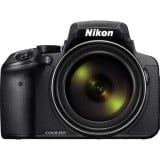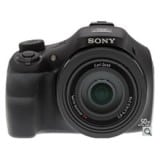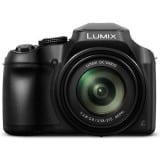Congratulations! You’ve begun your journey to become one of the millions of birdwatchers across the globe! Apart from being one of the most exciting and fun hobbies for people of all ages, the physical and mental benefits involved in birdwatching is so good for your general wellbeing.
7 Steps To Start - Birdwatching For Beginners
- Choose a bird identification book (aka field guide) or app
- Understand some basic with bird identification
- Find birdwatching binoculars and/or a camera
- Start a birding life list
- Get outside and do some birding
- Read/watch a few inspiring birdwatching books and movies
- Join a birdwatching club and accelerate your learning
Step 1: What bird identification book or app should I use?
To make it easier for you to find the right field guide, I have listed the most popular books for North America, Europe, Africa, Asia and Oceania. Although you will likely only need one if these initially for your home region, you will probably find yourself buying books for regions you end up visiting on holiday as you become more obsessed with the hobby. It’s also just interesting paging through a foreign region bird book and looking at all the different species that occur!
Also see: The best free birdwatching apps
Bird Identification Books & Apps
North America Bird Identification Books & Apps | Author | Get a Copy |
The Sibley Guide to Birds, 2nd Edition | David Sibley | |
Birds of North America: A Guide to Field Identification | Robins et al | |
Birds of North America | Kenn Kaufman | |
National Geographic Field Guide to the Birds of North America | Dunn et al | |
American Museum of Natural History Birds of North America | Hess et al | |
Peterson Bird Field Guide | Roger Peterson | |
Audubon Bird Guide | Udvardy et al | |
Merlin Bird ID | Cornell Lab |
| African Bird Identification Books & Apps | Author | Get a Copy |
| Sasol Birds of Southern Africa | Ian Sinclair | Book | iOS | Android |
| Roberts Birds of Southern Africa | Chittenden et al | Book | iOS | Android |
| Birds of Southern Africa | Sinclair et al | Book |
| The Birds of East Africa | Stevenson et al | Book | iOS | Android |
| Birds of Eastern Africa | Ber van Perlo | Book |
| Birds of the Horn of Africa | Nigel Redman | Book |
| Birds of Western Africa, 2nd Edition | Borrow, Demey | Book |
| Birds of Western and Central Africa | Ber van Perlo | Book |
| Birds of Africa South of the Sahara | Ryan, Sinclair | Book |
|
Asian Bird Identification Books & Apps |
Author |
Get a Copy |
|
Field Guide to the Birds of South-East Asia |
Craig Robson |
|
|
Birds of South-East Asia |
Norman Arlott |
|
|
Birds of East Asia |
Mark Brazil |
|
|
Birds of the Indian Subcontinent |
Grimmett |
|
|
Birds of the Middle East |
Porter, Aspinall |
|
Oceania Bird Identification Books & Apps |
Author |
Get a Copy |
|
The Field Guide to the Birds of Australia |
Knight et al |
|
|
The Australian Bird Guide |
Menkhorst et al |
|
|
Field guide to Australian birds |
M. Morcombe |
|
|
Birds of Hawaii, New Zealand, Central & West Pacific |
Ber van Perlo |
|
|
Birds of New Guinea, 2nd Edition |
Pratt et al |
Step 2: Getting started with bird identification
Learning how to categorise different groups of birds

Also see: Hawk identification tips
Start learning common bird calls
Identifying birds by their call is a skill that most birders only start learning once they are more experienced but there is nothing stopping you from starting early. If you are using an app for bird identification, a great way to learn is to play the calls of familiar birds from time to time. It can give you a distinct advantage when searching for what you are looking for, or if you are trying to help someone identify a bird they heard.
Sonto Tembe imitating Southern African bird calls
Step 3: What birdwatching binoculars and/or camera do I need?
What Binoculars do I need for Birdwatching?
Binoculars are traditionally advertised as ‘Magnification’ x ‘Objective Diameter’ e.g. 10 x 24mm and these are the first criteria you want to consider. Magnification, simply refers to how much closer an object will seem when looking though the binoculars. 8x and 10x binoculars are the most popular amongst birdwatchers. I have written a blog (8x-or-10x-birding-binoculars) that covers everything you need to help you choose between 8x and 10x binoculars. The objective lens diameter refers to the size of the lens closest to the object being observed. Generally, the bigger the objective lens diameter, the better the low light performance but this comes at the expense of bigger and heavier binoculars. The sweet spot for great low light performance and reasonable weight and size is an objective lens diameter of 42mm. This is why the top selling birdwatching binoculars are either 8 x 42mm or 10 x 42mm. So be careful if you are tempted to stray from this to anything else.
I have written a blog (Best lightweight birding binoculars) that lists the most popular and best reviewed full-size and compact binoculars in three price ranges (budget, mid-range and premium). All the binoculars covered in this list are Roof Prism type designs which benefit from being compact, lightweight and easier to hold than Porro Prism type designs.


| WINGSPAN EAGLESCOUT | BUSHNELL H2O BINOCULARS | VORTICS OPTICS DIAMONDBACK HD BINOCULARS | |
|---|---|---|---|
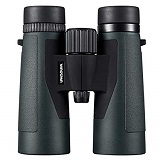 | 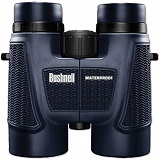 | 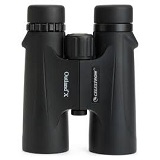 | |
| Weight: | 595g / 21 oz | 436g / 15.4oz | 604g / 21.3 oz |
| Magnification: | 10X | 10X | 10X |
| Objective Lens: | 42mm | 42mm | 42mm |
| Waterproof: | Yes | Yes | Yes |
| Amazon Reviews | 817 Reviews 4.6 out of 5 stars | 2,243 Reviews 4.6 out of 5 stars | 605 Reviews 4.8 out of 5 stars |
| Price: | $74 | $89 | $170 |
Do I need a camera for birdwatching?
- Cameras assist bird identification by allowing birders to study a photographed bird in great detail and thereby get a more accurate identification. This process of taking a photo and then identifying from the photo has been revolutionary for many birders and provided greater certainty around rare bird sightings.
- Many new cameras are GPS enabled so images can be tagged with location data. Using software to read location and time data helps software platforms automatically organise photos.
- Cameras have given rise to dual life lists, one list of birds a person has seen and the other a list of everything a person has photographed. Keeping a photographed list, is a fantastic way to add to the challenge of birdwatching.
- Finally, bird photography helps share the beauty and wonders of the avian world.
Entry level birdwatching cameras
The following three entry-level cameras that I have chosen are all highly rated and best sellers in their class. Although I have defined them as entry-level, they are still capable of taking outstanding photos. All cameras feature optical zooms between 50X and 83X, which is more than enough to get decent closeups of the birds you are photographing. Furthermore, the Nikon and Sony are both equipped with GPS so importing your photos onto platforms like Birda will automatically tag your photo with the bird sighting location. GPS tagging of photos is a huge time saver if you are using images to log your bird sightings, so it is something I can’t recommend enough in a birdwatching camera.
Higher-end birdwatching cameras
The following three higher-end cameras that I have chosen are all GPS enabled DSLR’s that are highly rated on Amazon. I have only suggested GPS enabled DSLR’s due to the massive time saving that GPS tagged photos brings to your workflows. I was, however, surprised by the lack of DSLR’s with integrated GPS, hence the two Canon models in the line-up. The only Nikon and Sony DSLR’s cameras with GPS are either very old models, have poor reviews regarding their GPS or are their top of the range $3,000 plus models. If you are not interested in the models in this list, then consider getting a GPS adapter. E.g. Nikon’s GP-1A GPS unit or the Canon GP-E2 GPS unit which simply connects to the flash shoe. These GPS units do the job but in my experience with the Canon 7D and the GP-E2, they are bulky, eat batteries and are one more piece of kit you need to think about.

Canon 7D Mark II | Pentax K-1 Mark II | Canon 6D Mark II | |
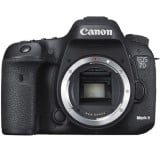 | 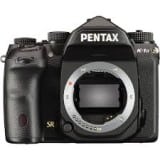 | 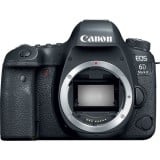 | |
Weight: | 2.01lb | 2.2lb | 3.45lb |
Sensor: | 20.2MP | 36MP | 26.2MP |
GPS Sensor: | Yes | Yes | Yes |
Sensor Size: | APC-C | Full Frame & APS-C mode | Full Frame |
Release Date | Sept 14, 2014 | Feb 21, 2018 | Jun 20, 2017 |
Amazon Reviews | 448 Reviews 4.4 out of 5 stars | 16 Reviews 5 out of 5 stars | 304 Reviews 4.7 out of 5 stars |
Price: |
Step 4: Getting started with your birding life list
It is never too soon to start your life list and these days it has also never been easier. A birding life list is typically a list of all the species that a person has seen over their lifetime. Birders describe adding a new species to their list as seeing a new ‘lifer’. For example, after a recent birding trip, a birder may say: “I saw 5 new lifers on my trip to Madera Canyon, Arizona last week.”
Digital birding life lists
Apart from being convenient, digital life lists make it easier for you to compare and compete against your friends and other birders around the world. Birda is one platform that simplifies the creation and maintenance of a digital life list and then uses this list to enable users to compete against friends, age groups or anyone on multiple different levels such as state/province, country and region.
Hard copy life lists
Step 5: Get outside and start birding
There is no better time to start than now! You can pretty much go birdwatching anywhere and in fact a great place to start is your own backyard, or if you live in a very built up area then your balcony or a local park is also a good spot. It might not sound very adventurous but there will be plenty of birds that are common to your local area which are good to start familiarising yourself with. My own list of garden birds is now up to 50 species including some unexpected rare sightings.
Simply step outside your back door, or peek out your window. Your garden can house many different species and you can see them easier and closer with a bird-feeder!
Some great suggestions for birdseed is Black-oil Sunflower Seed It’s a great overall choice because it’s packed with energy for our birds. A good seed mix containing sunflower hearts is a great option too. Now, just sit back, grab a drink and your binoculars and see how many different species show up. You might be surprised at how many species your garden holds.
Don’t forget to add some water for your birds. Food and water are fantastic ways to attract birdlife to your backyard. A shallow dish of water, or a small, bubbling fountain is a great addition (birds are attracted to the sounds of water!)
Seek out different locations
Whilst your back-yard or garden is a great place to start birding, and you’ll be able to see plenty of bird species close to home, you might want to expand your range of habitats. Perhaps you could take a trip to new habitats and try birding locations.
Many species have preferences for tree type, habitat type or proximity to water. Some might enjoy taller trees, other smaller species may prefer lower vegetation, some stick to rivers or streams, while others can be found in open fields. You’re unlikely to see a Puffin in a city park, but head to the right coast at the right time of year, you’ll be in for a treat!
Is your home in the city? Not to worry! Often our cities have some of the best places for birdwatching. City parks and green spaces can be incredible places to go birding because they act like a green oasis in a sea of concrete. Many have ponds for our waterfowl species and plenty of trees. Lots of habitats for a myriad of birds so you might see more than you’d think!
Consider when you'll be Birdwatching
A popular saying, “the early bird catches the worm”, is why many birders will head out at dawn. As most birds sleep at night, they awake ravinously hungry in the morning and will need to eat. Another great reason to go birding early is to witness and listen to the Dawn Chorus. This fantastic spectacle will help you learn your birdsong and also tell you exactly which bird species are around you.

Though you can birdwatch at other times of day, it might be best to avoid noon. Noon tends to be when most birds are least active and most difficult to see.
Your first birdwatching trip
Lets head outside! Your initial birding experience will set you up for success; if you have a great time, you’re more likely to go birding again! If you get the feeling that you’re overwhelmed or not quite understanding it yet, you may not return for a second chance. So let’s start with a plan.
Here’s what we’d suggest: Choose a few common birds from your field guide and go find them. Choose something that you’re sure might be living close by, perhaps your field guide has a map of the species’ distribution. See what time of year the bird is usually seen and go for it!
There are a lots of resources you can use to determine what birds have been seen nearby, like the Birda’s Location Feature. Head to the Discovery Page and then Locations. You’ll see birding spots close-by and the species you might see there.
What to do when you're feeling frustrated
Perhaps you’ve spent a while searching on a walk and not seen a single bird or gazed out at your backyard bird feeder to see nothing. Doubt and frustration can start to creep in. There is a solution to this and the good news is that 2 pairs of eyes is better than 1. Grab a friend, or join a local bird group, there’s plenty around.
Local bird clubs have some amazing experts who can assist you in your birdwatching journey. They love nothing more than to help you ID a bird and give you helpful tips and tricks to remembering your species. You might be more likely to remember tips from another birder than you are to reading it from a book.
Step 6: Read/watch a few inspiring birdwatching books and movies
If it is dark or raining and you feel like diving deeper into your new hobby, then a great way to learn and build your enthusiasm is to watch a great birding movie or read an inspirational birding book. I’ve put together a list of the top 18 bird related movies and documentaries as well as a list of birdwatching novels and educational books.
Birdwatching Movies & Documentaries to Watch
Title | Movie/Documentary | IMDB | More Infomation |
Our Planet | Birds Of Paradise | Documentary | 9.4/10 | |
The Life of Birds | Documentary | 8.9/10 | |
Earthflight | Documentary | 8.5/10 | |
Winged Migration | Documentary | 7.9/10 | |
The Wild Parrots of Telegraph Hill | Documentary | 7.8/10 | |
Birdman of Alcatraz | Movie | 7.8/10 | |
The Eagle Huntress | Documentary | 7.5/10 | |
March of the Penguins | Documentary | 7.5/10 | |
Birders: The Central Park Effect | Documentary | 7.4/10 | |
The Crimson Wing | Documentary | 7.3/10 | |
Ghost Bird | Movie | 7.3/10 | |
Fly Away Home | Movie | 6.8/10 | |
Pelican Blood | Movie | 6.4/10 | |
Rare Birds | Movie | 6.4/10 | |
The Hide | Movie | 6.4/10 | |
A Birder’s Guide to Everything | Movie | 6.3/10 | |
The Big Year | Movie | 6.2/10 | |
The Bird Men | Movie | 5.6/10 |
Birdwatching Books to Read
For the bookworms out there who will choose a book over a movie any day, here are a few novels and educational books for you to pour over.
Step 7: Join a birdwatching club and accelerate your learning
The best way to learn a new skill is to learn from someone that has already mastered it. Becoming a member of a bird club is a great way to meet and interact with people who are passionate about birding and have a lot of birding experience. So, definitely look into joining your local bird club.
Here are a few resources to help you find local birdwatching clubs:
- USA: American Birding Association (ABA)
- UK: Royal Society for the Protection of Birds (RSPB)
- Australia: Ausbird
- South Africa: Birdlife SA
- India: Bird Count India
- Other: Birdlife International
If you have found our birdwatching for beginners article useful, please share it via Facebook, Twitter, etc.


